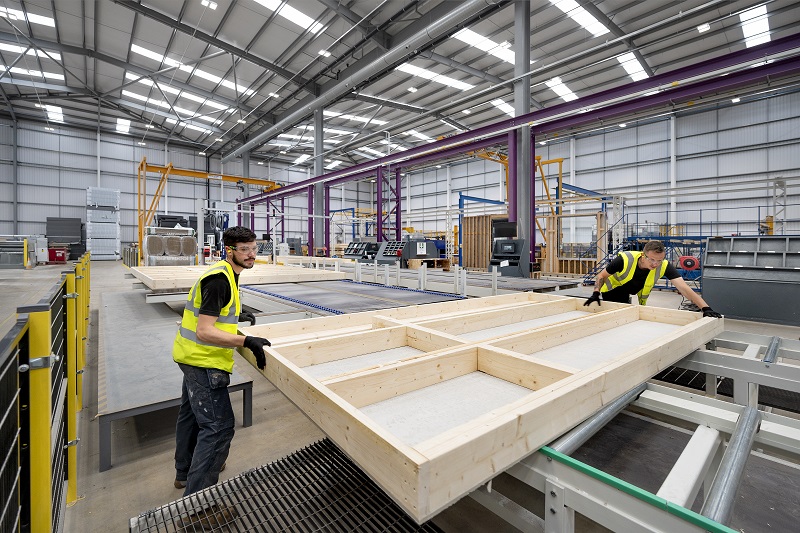The benefits of bringing timber and offsite construction together
14/11/2022

Among the many benefits of structural timber construction is its compatibility with offsite manufacturing processes. Andrew Orriss at the Structural Timber Association looks at the reasons behind this and the role timber has to play.
Modern methods of construction (MMC), and offsite, are increasingly being acknowledged as the future of construction. This is due to the need to alleviate industry issues such as challenging project timescales, the environmental impact of construction and serious skills shortages. There are also practical considerations such as a lack of space on some sites that means onsite assembly and storage becomes a challenge.
In 2017, the Government introduced a ‘presumption in favour of offsite’ for projects procured by the departments of education, defence, justice, transport and health and social care. This means that these government departments have to make a commitment to favour tenders that had an offsite construction component. The Construction Playbook, the guidance issued in December 2020 procurement for public works, continued this support.
Timber and offsite
While the move to offsite processes is considered a relatively recent development, timber frame construction has been common, especially for housing, for many years. While it has been less widespread in England, timber frame is the preferred construction technology in Scotland as well as in Scandinavia and North America.
Timber is ideal for offsite construction for several reasons. Firstly, when compared with other building materials, timber is lighter enabling the logistics of moving fabricated components to site simpler. Larger panels are factory assembled in as little as one hour and as much as one house will fit on to one vehicle, much less than traditional construction that typically reaches vehicle capacity for weight before volume.
Additionally, the controlled factory environment and simple and reliable timber construction processes means that defects can be minimised, allowing a higher quality build and reduced waste.
Improved build times
The combination of timber and offsite construction also has wider benefits for the project. Structural timber frame build times can be reduced by as much as 30%. The faster build time, leading to reduction of on-site activity also means that disruption to the local community can be minimised.
Carbon sequestration
One of the most widely recognised benefits of timber is its carbon sequestration, as trees absorb and store CO2 as they grow. This means that for every cubic metre of timber used in construction, an estimated 0.9 tonnes of CO2e is sequestered and stored for the lifetime of the building.
Alleviate skills shortages
Finally, offsite construction can help to address the skills shortage since the characteristics of the build allow for a smaller workforce and at the same time alleviate the scarcity of certain traditional skilled trades.
Offsite manufacturing and structural timber construction have the potential to improve the speed, quality and efficiency of project delivery, whilst also reducing the environmental impact during construction and through the lifetime of the building.
To find out more about structural timber construction go to www.structuraltimber.co.uk